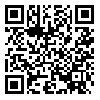BibTeX | RIS | EndNote | Medlars | ProCite | Reference Manager | RefWorks
Send citation to:
URL: http://journal.nkums.ac.ir/article-1-108-en.html
Abstract Background & Objectives: The aim of this study was to compare the effects of strength training on electroneurographic indicators of the symmetric member in the upper limb. Materials and Methods: 30 healthy women without any past damage on the elbow joint, tendons and biceps muscle ligaments were chose and all of them were right handed. They were randomly divided in three groups. Experienced group performed strength training on biceps muscle of the dominant hand and 2 experienced groups did the same exercises on biceps muscle of the non- dominant hand. It was done three times a week for eight weeks. Electromyography (EMG) with the maximal voluntary contraction (MVC) of biceps muscle of dominant and non-dominant both hands in the pre-test were measured. To analyze the presented information the t-student test was used and the measurement was done in a meaningful level (p≤0.05). Results: The results show that after eight weeks doing exercise in both hands, there is a meaningful increase in MVC and EMG. While in control group there wasn’t any differences. Cross transfer rate equal to the dominant of non-dominant. Conclusion: The unilateral strength training causes increase in EMG, amplitude accretion and decreased latency of M wave in both training and not raining members. The underlying Mechanisms which is responsible for electroneurographic cross transfer may be explained by associational neurons, corpus callosum and parallel processing of the nervous system
Received: 2015/01/1 | Accepted: 2015/01/1 | Published: 2015/01/1
| Rights and permissions | |
 |
This work is licensed under a Creative Commons Attribution-NonCommercial 4.0 International License. |





